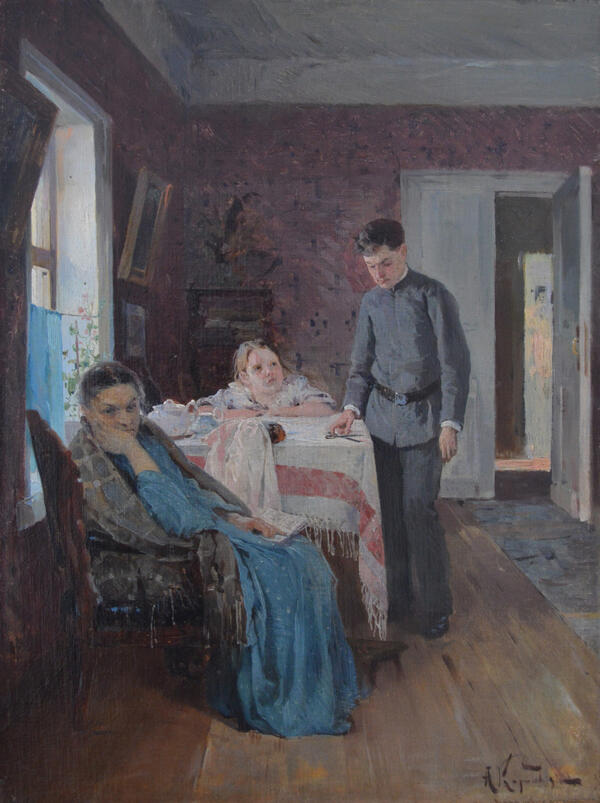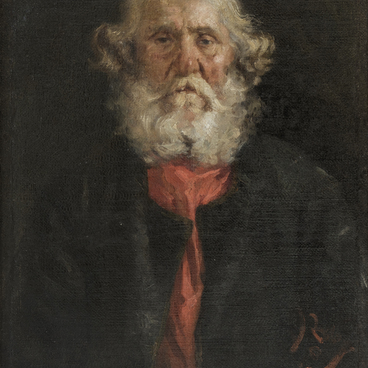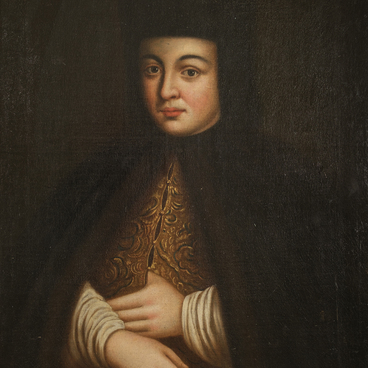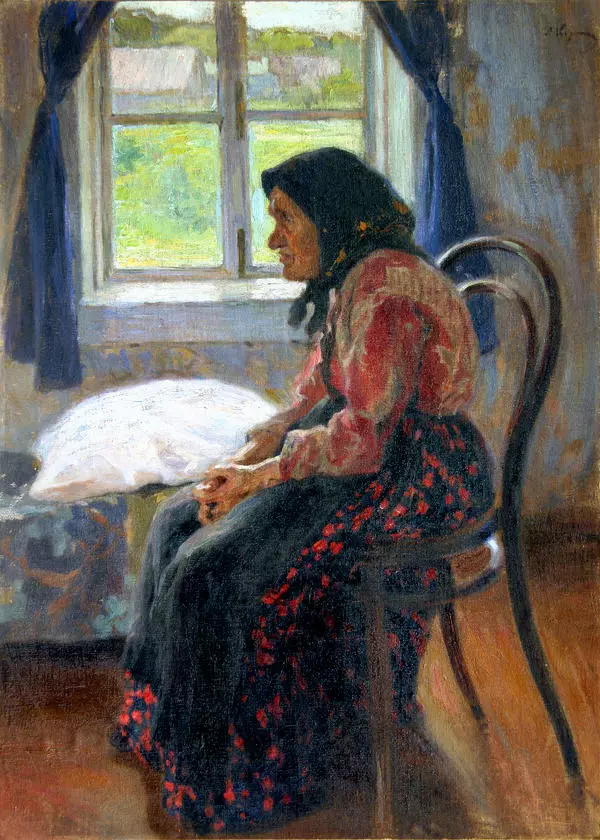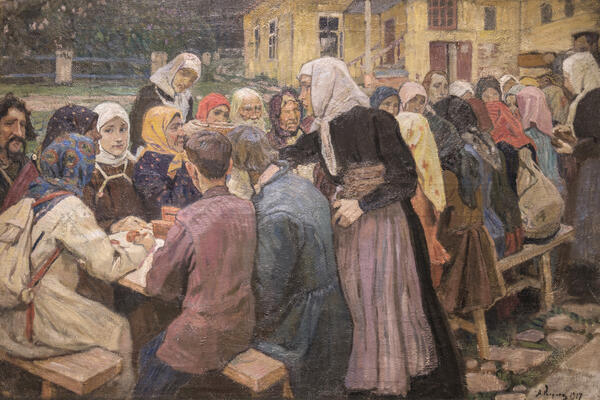Aleksey Mikhailovich Korin was born into a dynasty of icon painters in the village of Palekh, Vladimir Governorate. His grandfather ran a small icon painting workshop. Several members of the family became painters. The most famous among them was Pavel Korin. After learning the art of icon painting at the Trinity Lavra of St. Sergius, Aleksey Korin decided to go against his father’s wishes and study painting in Moscow. In 1884, thanks to his excellent drawing and painting skills, he enrolled in the School of Painting, Sculpture and Architecture and immediately joined the figure class. He studied under the guidance of prominent artists who represented the Society for Traveling Art Exhibitions, including Illarion Pryanishnikov, Vladimir Makovsky, and Vasily Polenov.
In 1891, Aleksey Korin started displaying his works at exhibitions of the Society and in 1895 became its member. Before that, in 1892, Pavel Tretyakov purchased his painting “The Sick Artist”. For nearly a quarter of a century, Aleksey Korin taught at his alma mater, painted churches, and restored icons and frescoes.
Researchers note that while Aleksey Korin did not explore a wide range of subjects or create large-scale paintings, he captured life in a candid manner, was sincerely interested in his models, and was able to convey their emotional state. All of this is evident in the small genre scene “Failed Again”. Most likely, the work housed by the National Gallery of the Komi Republic is the artist’s copy of his own earlier painting by the same name that he first demonstrated at the 19th exhibition of the Society for Traveling Art Exhibitions in the spring of 1891. Nowadays, the original painting belongs to the Kaluga Museum of Fine Arts. The painting from the National Gallery of the Komi Republic is dated 1894. It is smaller, and its composition is mostly similar to that of the earlier work, although it has some differences.
In the first version of the painting, the atmosphere is more oppressive. The student lowers his head, the mother appears frustrated, and the younger sister does not look at her brother. The dark doorway in the background adds to the overall uncomfortable feeling. In the second version, the mother seems more resigned, the girl looks at her brother with compassion, and the student is standing straighter. He looks pensive rather than depressed. The light shining through the door adds an optimistic touch, like a light at the end of the tunnel.

